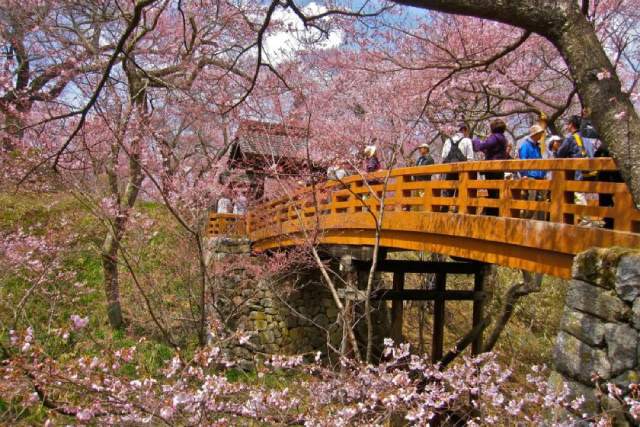
Takato Castle, located in the city of Ina in southern Nagano Prefecture, Japan, was a notable stronghold during the Sengoku period. By the end of the Edo period, it was the residence of a cadet branch of the Naito clan, the daimyo of the Takato Domain. Also known as Kabuto Castle, it was originally constructed in the 16th century and is now mostly in ruins.
The castle is situated on a hill in what was once Takato Town, at the eastern edge of the Ina Valley in southern Nagano. It was strategically positioned at the crossroads of the Akiba Kaido, a route connecting Totomi Province with the Suwa region of Shinano and Kai Province, and a road leading to western Ina Valley and Mino Province. The location was crucial for controlling southern Shinano from Kai Province. The castle overlooked the confluence of the Mibugawa and Fujisawa rivers, which provided natural defenses. Its fortifications included deep trenches, earthen ramparts, and stone walls, arranged in concentric rings, typical of Takeda Shingen’s style. The Central Bailey was protected by the Second and Third Baileys, along with four additional enclosures. Most of the gates were box-shaped for added defense. During the Edo period, the castle’s front gate was moved to the west to face the castle town directly. A han school, constructed in 1860, was situated within the Third Bailey, and a few samurai residences from that era still remain in the surrounding area.
The exact date of Takato Castle’s construction is unknown, but before it existed, there was another fortification controlled by the Takato clan, retainers of the Suwa clan, who had dominated the region since the Kamakura period. In 1545, Takeda Shingen broke his alliance with the Suwa clan and captured Takato Castle during his campaign to conquer southern Shinano. After seizing the castle, Shingen had it completely rebuilt according to contemporary military designs by his strategist, Yamamoto Kansuke. Shingen granted the castle to his retainer, Akiyama Nobutomo, and later passed it on to his son, Takeda Katsuyori. From Takato Castle, Shingen launched his invasion of Mino Province and his final campaign toward Kyoto in 1572.
After Shingen's death, the castle was defended by Nishina Morinobu, Katsuyori's younger brother. However, in 1582, Oda Nobutada, son of Oda Nobunaga, captured the castle during the Battle of Temmokuzan, overwhelming the 3,000 defenders with 50,000 troops. Despite Nishina’s valiant resistance, the Takeda forces were ultimately defeated.
Following the destruction of the Takeda clan, Takato Castle was granted to Nobunaga’s general Mori Hideyori. After Nobunaga’s assassination in the Honno-ji Incident, the castle fell under the control of Tokugawa Ieyasu, who assigned it to Hoshina Masanao. When the Tokugawa were relocated to the Kanto region by Toyotomi Hideyoshi in 1590, Takato was given to Hideyoshi’s general, Ogasawara Sadayoshi. Tokugawa Ieyasu regained control of the castle after the Battle of Sekigahara in 1603, and under the Tokugawa shogunate, Takato became the center of the 30,000 koku Takato Domain, ruled by the Hoshina clan. The Hoshina were succeeded by the Torii clan (1636–1689) before the Naito clan took control until the Meiji Restoration.
With the establishment of the Meiji government and the abolition of the han system, the castle structures were dismantled, and surviving gates were donated to nearby temples or sold to private owners. Today, the site is preserved as Takato Castle Ruins Park (Takatojoshi Koen), famous for its cherry blossoms, which were planted in the Meiji period. The park is considered one of Japan’s top three cherry blossom viewing spots, alongside Hirosaki Castle and Mount Yoshino. Though little of the original castle remains, some moats and stone walls have survived. One yagura has been reconstructed, and the Otemon (main gate), which had been moved to a high school, was returned to its original site in 1984. The oldest remaining building on the castle grounds is the Shintokukan, a former han school built by the last daimyo of Takato, Naito Yorinao.
See also
-
Marugame Castle
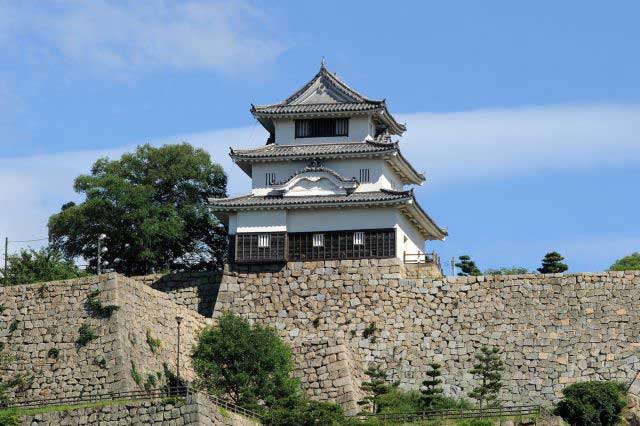
Marugame is part of the so-called “Authentic Dozen,” a group of twelve castles whose donjons have survived to the present day without major reconstructions since the Edo period.
-
Iyo Matsuyama Castle
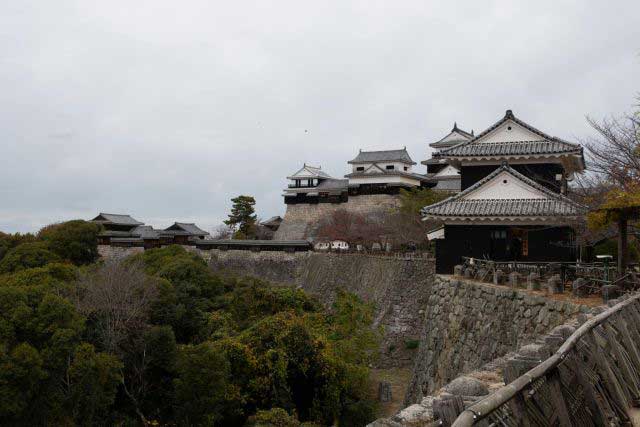
Historically, the center of Iyo Province—corresponding to today’s Ehime Prefecture on the island of Shikoku—was the city of Imabari, while the Matsuyama area was regarded as an agricultural hinterland with broad plains and low hills. During the Muromachi period, the central part of the province was governed by the Kano clan from Yuzuki Castle. With the onset of the Sengoku period, however, this clan lost its former influence and was forced to survive in the shadow of the more powerful Mori and Chōsokabe clans. After Toyotomi Hideyoshi’s forces conquered Shikoku in 1587, the northern part of Iyo Province was granted to Fukushima Masanori, one of the so-called “Seven Spears of Shizugatake.” In 1595, Masanori was transferred to Kiyosu Castle, and the lands around Matsuyama were given to another of the Seven Spears, Katō Yoshiaki, who received Masaki Castle and an income of 60,000 koku of rice.
-
Kanazawa Castle
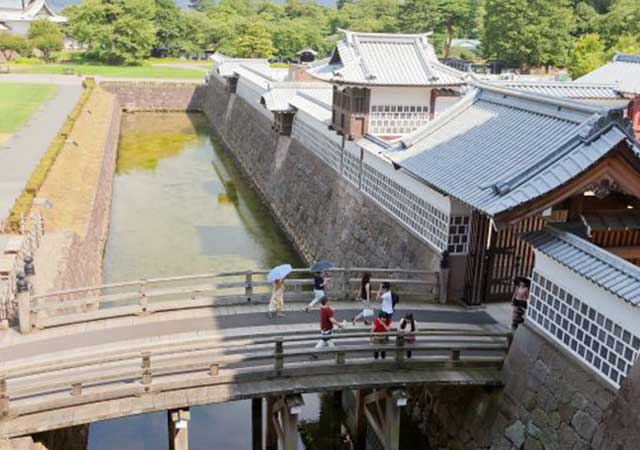
Construction of Kanazawa Castle began in 1580 on the orders of Sakuma Morimasa, a vassal of Oda Nobunaga. The castle was built on the site of the Ikko-ikki sect's Oyama Gobo temple, which is why it is sometimes called Oyama Castle. Morimasa managed to build several moats and begin construction of a castle town. However, after his defeat at the Battle of Shizugatake in 1583, he was executed, and ownership of the castle passed to Maeda Toshiie (1538–1599).
-
Nakatsu Castle
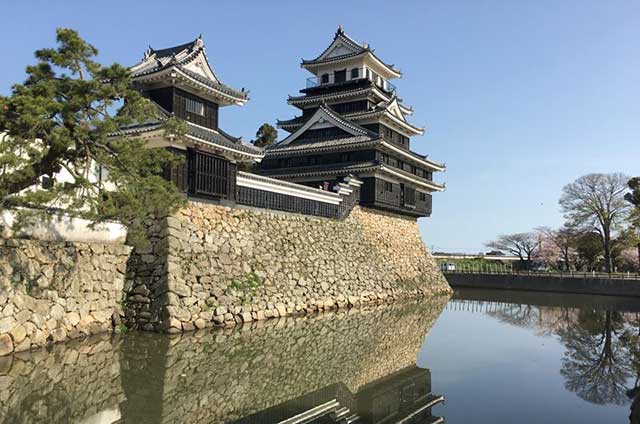
Kuroda Yoshitaka (1546–1604) was one of the closest advisors to the legendary military commander Toyotomi Hideyoshi. He took part in key military campaigns of the late 16th century, including the campaign against Shikoku in 1585 and the campaign against Kyushu in 1587. Later, during the second campaign in Korea, Yoshitaka served as chief advisor to the commander of the invasion forces, Kobayakawa Hideaki. After Hideyoshi's death, he swore allegiance to Tokugawa Ieyasu, thereby securing his influence and patronage under Japan's new leader.
-
Edo Castle
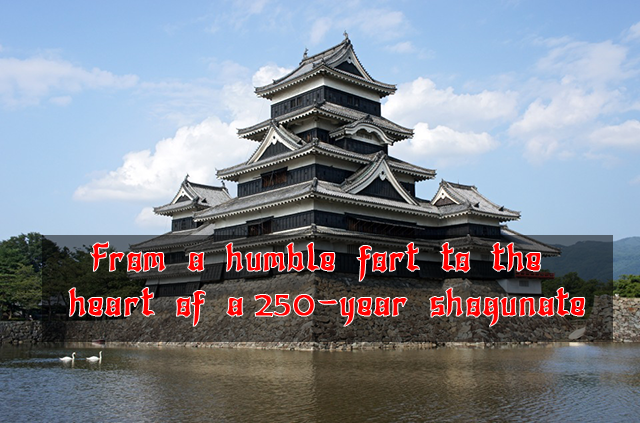
The history of Edo Castle dates back to the Heian period, when the Edo clan built a small fort on this site. In 1457, the vassal of the Uesugi clan, Ota Dokan (1432–1486), constructed a full-scale castle here. Internal conflicts weakened the Uesugi clan, and in 1524, Ota Dokan’s grandson, Ota Yasutaka, surrendered the castle without resistance to the forces of Hojo Soun, the ambitious leader of the Hojo clan. While Odawara Castle remained the clan's main stronghold, Edo was considered a key strategic fortress.
-
Samurai Museum Shinjuku
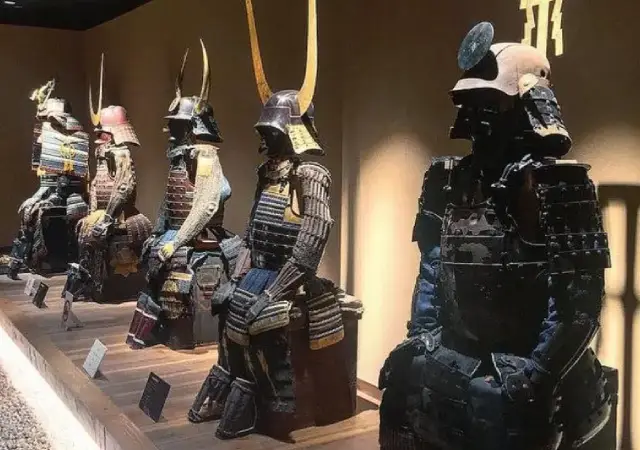
Situated in the vibrant district of Shinjuku, the museum showcases an extensive collection of samurai armor, weapons, and cultural artifacts spanning from the Kamakura to the Edo period. The exhibits aim to convey the samurai's unwavering commitment to honor and discipline, reflecting how their spirit continues to influence modern Japanese culture.
-
Anjo Castle
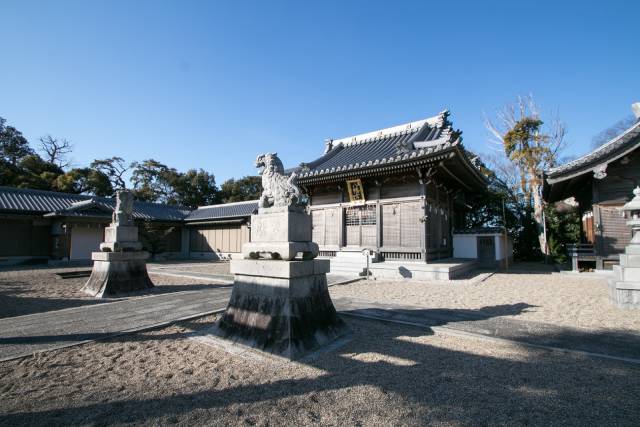
Anjo Castle was built on a slight elevation at the edge of the Hekikai Plateau, about 2 kilometers southeast of present-day central Anjo City in Aichi Prefecture. Today, the surrounding area thrives on large-scale agriculture and automotive manufacturing, utilizing the expansive flatlands and its proximity to the Nagoya region.
-
Numata Castle
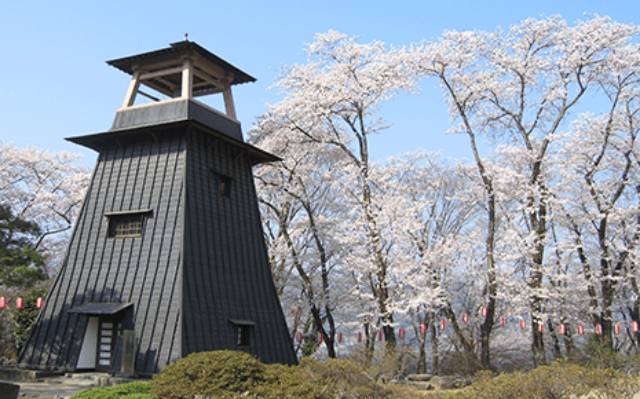
Numata Castle, located in Numata, northern Gunma Prefecture, Japan, has a rich and complex history. During the late Edo period, it served as the residence of the Toki clan, who ruled the Numata Domain. Over the centuries, the castle changed hands multiple times and was the site of significant battles during the Sengoku period.

